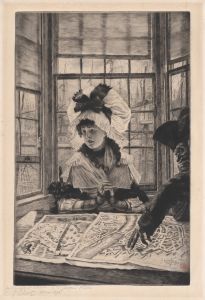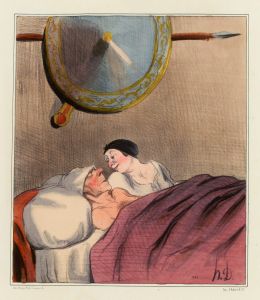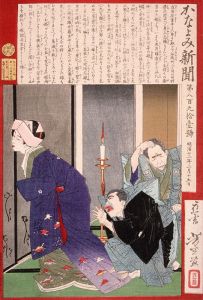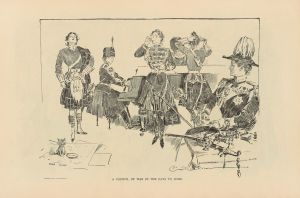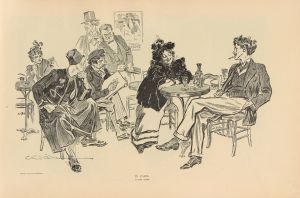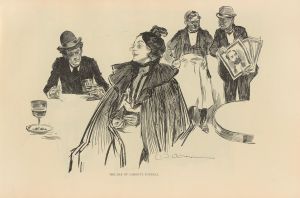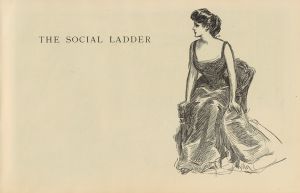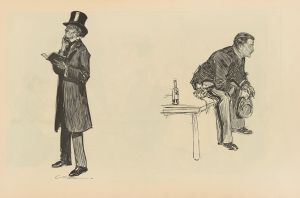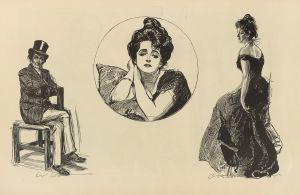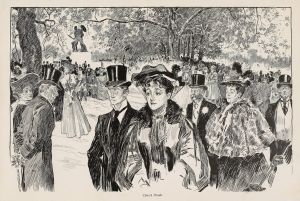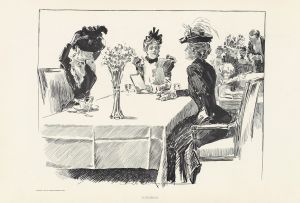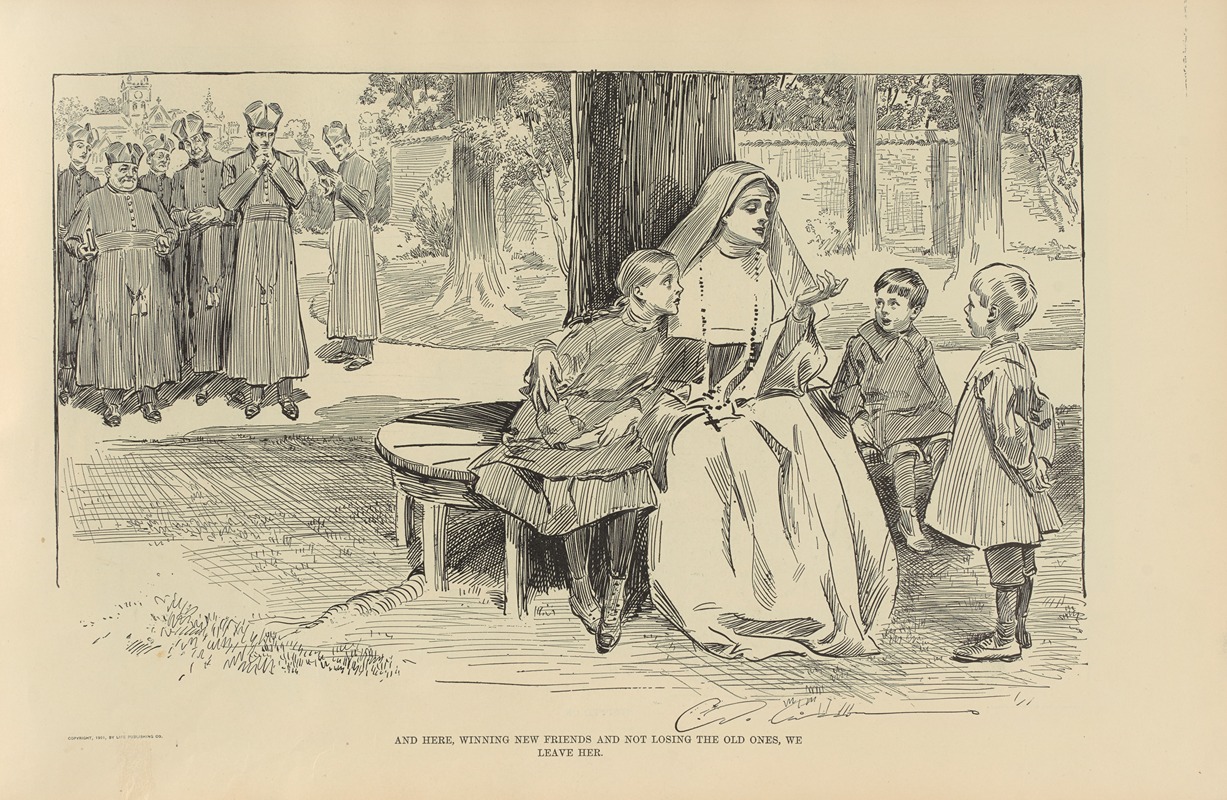
And here, winning new friends and not losing the old ones, we leave her
A hand-painted replica of Charles Dana Gibson’s masterpiece And here, winning new friends and not losing the old ones, we leave her, meticulously crafted by professional artists to capture the true essence of the original. Each piece is created with museum-quality canvas and rare mineral pigments, carefully painted by experienced artists with delicate brushstrokes and rich, layered colors to perfectly recreate the texture of the original artwork. Unlike machine-printed reproductions, this hand-painted version brings the painting to life, infused with the artist’s emotions and skill in every stroke. Whether for personal collection or home decoration, it instantly elevates the artistic atmosphere of any space.
Charles Dana Gibson was a prominent American illustrator best known for his creation of the "Gibson Girl," an iconic representation of the American woman at the turn of the 20th century. His illustrations were widely published in magazines such as Life, Scribner's, and Harper's, and they played a significant role in shaping the visual culture of the era.
The illustration titled "And here, winning new friends and not losing the old ones, we leave her" is one of Gibson's works that exemplifies his style and thematic focus. This piece, like many of Gibson's illustrations, likely features the Gibson Girl, a character that became synonymous with the idealized American woman. The Gibson Girl was portrayed as independent, confident, and socially adept, often depicted in social settings that highlighted her charm and poise.
Gibson's work was characterized by its detailed pen-and-ink technique, which allowed him to capture the subtleties of expression and the elegance of fashion that defined the Gibson Girl. His illustrations often depicted scenes of social interaction, reflecting the cultural and social dynamics of the time. The title "And here, winning new friends and not losing the old ones, we leave her" suggests a narrative of social grace and the ability to navigate different social circles, a common theme in Gibson's portrayal of the Gibson Girl.
The Gibson Girl became a cultural phenomenon, influencing fashion and societal expectations of women. She was seen as a modern woman who balanced traditional femininity with a new sense of independence and self-assuredness. This duality resonated with the changing roles of women during the late 19th and early 20th centuries, as they began to seek more opportunities for education and employment.
Gibson's illustrations, including this piece, were not only artistic expressions but also commentaries on the evolving social landscape. They captured the aspirations and tensions of an era in which women were beginning to assert more autonomy and challenge traditional gender roles. The popularity of the Gibson Girl also reflected the growing influence of mass media and consumer culture, as her image was widely disseminated through magazines and advertisements.
While specific details about the context or publication of "And here, winning new friends and not losing the old ones, we leave her" are not readily available, it is consistent with Gibson's broader body of work. His illustrations remain significant for their artistic merit and their role in shaping the cultural narratives of their time.
Charles Dana Gibson's legacy endures through his contributions to illustration and his impact on American cultural history. The Gibson Girl continues to be a symbol of the complexities and contradictions of femininity and modernity at the turn of the century.





